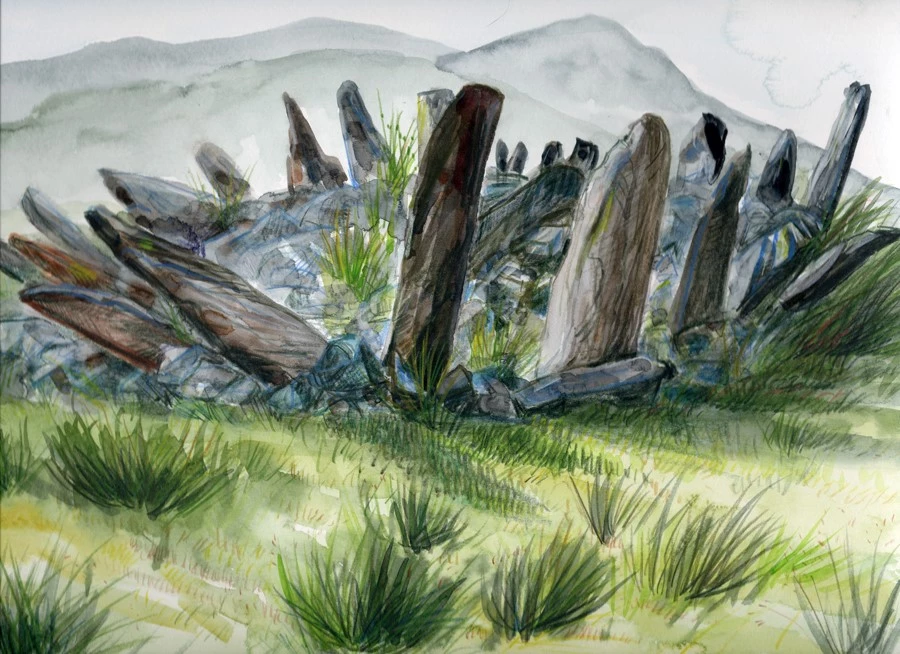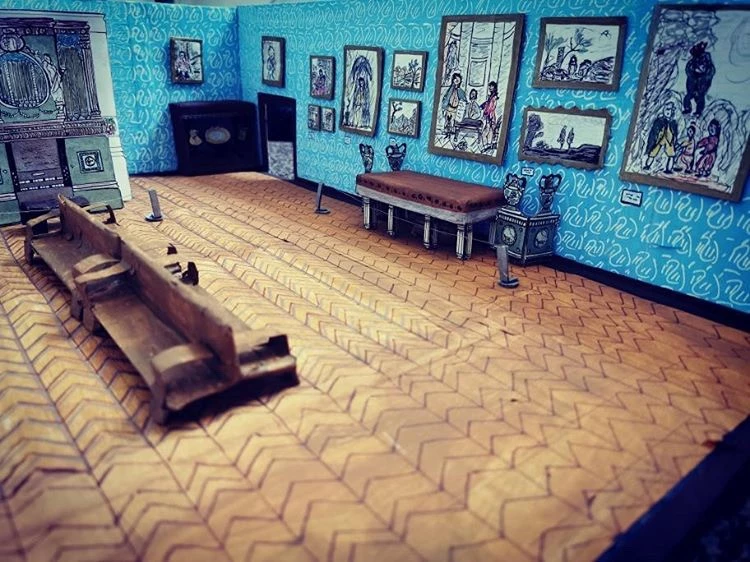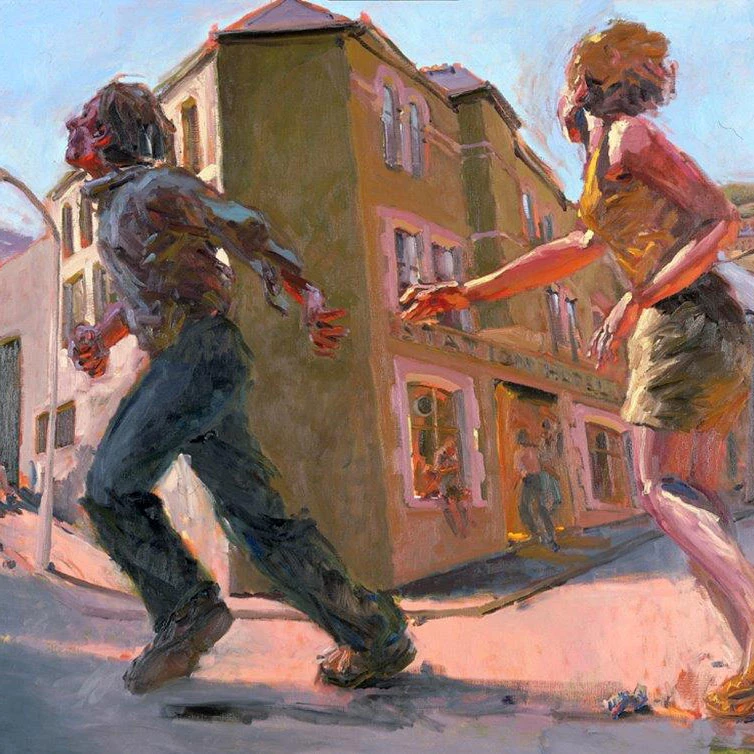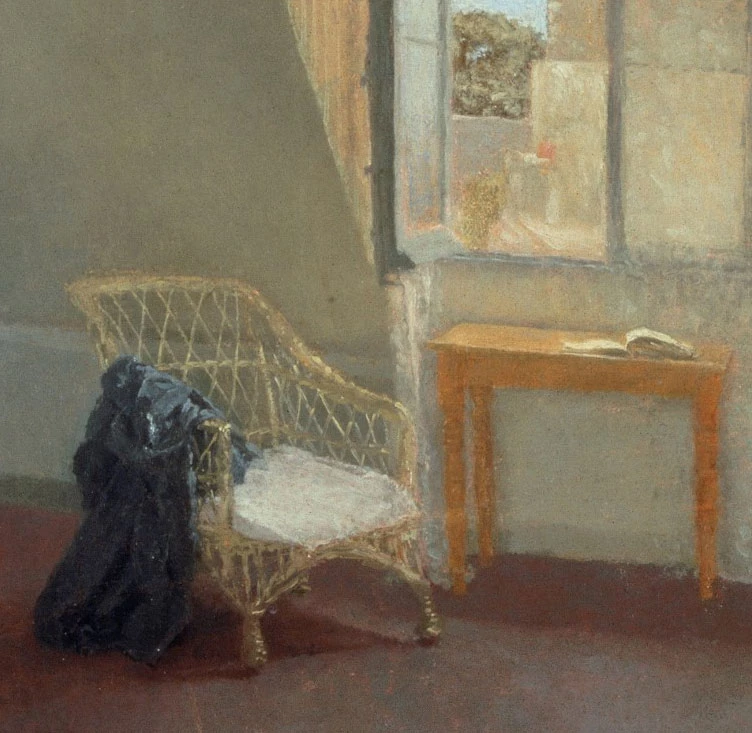I spent a long time thinking about this, how I might write this editorial. I’d wake in the dark and whisper thoughts into my phone. Scribble notes on the back of other notes. This became my companion thinking as I swam lengths of my local pool. Rehearsing a monologue in my head at each turn. And then, in an almost sudden shift – which often comes if we can trust ourselves enough – I realised I needed to write as I have encouraged others to do so here, to write from myself. This edition of Cynfas, four essays and a shorter piece featuring work from collections of National Museum Wales, is written from lived experience. It explores issues of the arts and health through the first person and so I will try to set the tone.
In recent years I have worked with healthcare professionals in training, students of nursing, midwifery and medicine. It started with trying to find and explore parallels between nursing education and my own work as an artist/maker and educator, as someone who makes and thinks with and through threads. It’s a big field, the medical or clinical humanities, and there’s nothing new about learning from the visual and other arts. Books and poems shared, art works scrutinised, films watched, blogs read, Instagram accounts followed. Insights into the human condition gained. Papers written and conferences attended. It is all very established practice. What is sometimes more challenging is to speak or make from the self. To think about what it is to be human ‘as if’, as with the current medical school cohort who will explore shame, a universal experience and familiar to some patients presenting in health care settings. What does shame feel like, look like, write like. What is it to experience shame, to be ashamed, to shame someone? This is more testing. It doesn’t feel scientific, it’s not evidence based. How will this make me a good doctor, a good nurse or midwife?
Here I turn to the words of a colleague, Wendy, a writer. I am forever scribbling notes in the margins, trying to capture other folk’s wisdom, and whenever Wendy talks my pen flies. Rising to the challenge of ‘What use is it?’ she reminded our group of artists and clinicians that every book is someone’s story, and that it’s hard to walk in someone else’s shoes – if that’s what we think empathy might be – if we can’t first walk in our own. It is this collapsing of distance that is so challenging, having to look closely at ourselves. This is building empathy, and it doesn’t arrive spontaneously. Olivia Laing writes in Funny Weather: Art in Emergency that, ‘Empathy is not something that happens to us when we read Dickens. It’s work. What art does is provide material with which to think: new registers, new spaces. After that friend, it’s up to you.’ (Laing: 2020, 2)
I sometimes think that my work with health care students is about supporting them in developing a compassionate vocabulary, and as Olivia Laing reminds us, that’s hard work. I suspect someone who has grasped this nettle, even revelled in it, is Zain Amir, an NHS doctor at the beginning of his specialist training in ophthalmology. In his writing here, Zain shares something of his relationship with visual art, how it sustains him and offers a necessary pause from the stresses of his clinical practice.
Like Zain, I am for an art that moves emotionally, and even physically. The sort of art that generates desire: to read, think, embrace, extend, weep. An encounter should make me want to do something, walk out across a landscape, telephone someone loved and not seen for too long. This is what I want art to do, for me.
Everyone who has written here shares something of their relationship with art or objects in the National Museum collection and what they mean for them. I also share mine. Before I do that, let’s think more about the link between art, health, and our well-being.
There is art that supports and extends our understanding of science. Collaborations between artists and scientists, known as sci-art, contribute to new research knowledge in health care and beyond. There is art that stitches together communities, works towards building and repair, and is concerned with togetherness, or valuing difference. Then there is art that makes the places in which we are all more vulnerable – the forced-into-action field hospitals of our Covid time, the chemotherapy ward – more bearable, softening life’s hardest edges. And then there is the small stuff. The stories of individual encounters, attachment, meaning, loss. The familiar experiences of day to day living that contribute to our personal narratives, our well-being, our health. Validation, witnessing, listening. I do like the big stuff, I love some of it, but it’s the small stuff that really matters to me. I am someone who sweats over the small stuff.
I want the stories of lived experience, and art made out of this drive occupies me the most. The compulsive stitching of Arthur Bispo do Rosário, who lived much of his life in a mental health institution, gathering, sewing, combining, making his own sense of things. Agnes Richter’s heavily stitched jacket, the Changi prison quilt, Kari Steihaug’s ‘The Unfinished’, Loes Veenstra’s 556 handknitted jumpers, each made without a pattern and none of them gifted. Käthe Kollwitz’s deeply moving etchings, Charlotte Soloman’s confessional ‘Life? Or Theatre?’ Judith Scott’s tender wrappings. Nearly all of the past, all of these stories of lived experience – the sometimes beyond words - made visible. So much of what I have listed here was made in response to trauma, some of it out of a drive to occupy the mind, to sublimate, to make meaning, to salve, or as testimony. This is art’s real power, it can bring to language things outside or beyond words, things felt rather than understood. One of my favourite projects made through necessity is shared here. Jade Fox, a member of the museum’s staff, held up her museum models to the cyclops lens of our shared zoom meeting. Her infinitely engaging 3D models of the National Museum are made from this and that out of an overwhelming need to find meaning, to make meaning, to keep the black dog of depression at bay.
I find all these things life-affirming. There is something about witnessing someone else’s loss, love, pain, struggle that strikes up a sense of kinship, of belonging, a reminder that nothing lasts forever: seize the day, smell the roses, chat with a loved friend. But then, I am speaking for myself, I have this audience. What is it to not have that opportunity, to have no place at the table, to find someone else always speaking on your behalf? Amanda Wells reminds us in her essay of the real and continued struggles of disabled artists, how physical and social barriers persist in education, making and representation, and how the collections of major national institutions contribute to this absence. Agency and representation are very much part of health and well-being.
Some things are hard to look at. They are truth-telling in ways that linger long after our heads are turned. Donald Rodney’s In the House of My Father is such a thing. Rodney was born a year ahead of me in the West Midlands, not an easy place to live as a black man in the overtly racist 70s. He died young of complications arising from Sickle Cell Anaemia, a genetically inherited condition. In the House of my Father Rodney’s outstretched left hand rests against a white sheet. In his palm, a fragile house fabricated from his own skin, a small doorway, gaping roof and weather worn walls, it looks like carefully folded parchment, both dry and waxy. A difficult house to live in, held together by straight pins.
Donald Rodney Gladstone, The house of my father
Rodney’s work was deeply political. He used his condition as a metaphor to address many issues, including structural racism, so I am reluctant to claim this exclusively as an expression of his lived experience of sickle cell anaemia, but it is hard to ignore that this is Rodney’s flesh, pierced here for a second time. For me, those dress pins – sharp straight pins with small circular heads used in dressmaking - return us to the dressed body, as much as to the corporeal fleshy body. Both garment and house are things in which we live, neither one necessarily comfortably. This tiny, fragile house, with all its references to the complexities of living with and within, is proffered as a metaphor, a question, even a provocation. It is a thing of such fragile beauty. I am encouraged to learn that it features in an education display developed for primary school children at Tate Liverpool.
I am for tenderness, which brings me to the second of my choices from the National Museum’s collection, Eve Arnold’s A baby's first five minutes, Port Jefferson, 1959. Something most denied to us in these times is physical contact. I have friends who live alone, friends who have spent months without the contact of another’s flesh. There is lots of evidence based research demonstrating the psychological importance of physical contact. Harry Harlow’s classic study of maternal contact with primates is a troubling, if accessible place to start. I have seen my mum once since March, and still then – even on her birthday – had to resist the urge to hold her. She is a good hugger, my mum, so to deny myself that pleasure was particularly hard.
If skin-on-skin touch is currently censured, perhaps we might enjoy it vicariously? This is where visual art champions and Eve Arnold’s ‘Baby’s First Five Minutes’ offers such a place. A mother’s fingertips meeting the freshly baked, still softly folded grasp of her baby. Beautifully lit flesh combining to produce a very particular horizon, nascent sunrise emerging from the bottom edge of the frame. A moment perhaps especially touchingly witnessed for what Arnold had so recently lost, for she had miscarried and undergone a hysterectomy shortly before making this work. This lightness of touch exists for me as a sign of hope, and hope is something we need to hold onto. And I do understand the complexities of touch, that it’s not always welcomed, not always sensually rewarding, and that images such as this can provoke anxiety, sadness, and can be triggering. Art can be so troubling. It can make us vulnerable, unravelling our seams and tightly bound edges. Yet these moments, as disturbing as they might be, can be the first steps toward validation, witnessing, recognition, even healing. As Maya Angelou has written, ‘There is no greater agony than bearing an untold story.’ MC Davies visits the revelatory encounter in her essay, sharing the experience of properly finding oneself in the work of another, a story of how ‘taking the lid off’ can lead to positive outcomes.
Eve Arnold A baby's first five miutes, Port Jefferson (c) Eve Arnold / MAGNUM / National Museum of Wales
As touch is discouraged, so staying in touch is similarly challenged. With so many of us currently living out every aspect of our lives at home, the social bonds of community and places and spaces of togetherness, often nurtured over many years, have become stretched and frayed. As someone with an interest in how material objects perform as continuing bonds (Klass, 1996) or evocative sites (Turkle, 2011), I was excited to discover the ‘Objects of Comfort’ project initiated by Sharon Ford, Learning Participation and Interpretation Manager at the Big Pit National Coal Museum. The project is a small and well considered attempt to build social bonds in nursing homes and the wider community through objects in the museum collection.
I would like to return to the beginning, to thoughts of evidence and usefulness and a literal circle – of sorts. It is usual to measure the impact of a project, especially when external funding is involved or sought, and I’m glad to share a particularly innovative tool for measuring well-being. At the beginning of the pandemic, Maria Hayes worked with YLab Wales to explore ‘the new realities of remote arts and health delivery’. The outcome is a well-being measure in the form of a colour wheel with a unique feature. Hayes’s measure has the capacity to contribute to well-being, and I’ll leave that for you to explore in her writing.
Arts and health is occasionally dismissed as soft, as though there is much to be gained in its opposite – hard, tough – as if it is soft at all. Unsurprisingly, I am not advocating for this. Instead, I think, as the essays included here demonstrate, the arts and health field is questioning, challenging, provocative, enabling and transformative. Arts and health is life itself.
I’d like to thank Zain Amir, MC Davies, Maria Hayes and Amanda Wells for their illuminating, thought provoking, moving and occasionally provocative essays, and Becky Adams for her beautiful learning resource on quilting – your chance to make your own object of comfort. I am grateful to the staff of National Museum Wales, particularly Lisa Edgar and Jake Griffiths, for their support in drawing together this second edition.
Klass, D et al (1996) Continuing Bonds: New Understandings of Grief. London: Taylor and Francis
Laing, O (2020) Funny Weather: Art in an Emergency. London, Picador.
Turkle, S. (ed) (2007) Evocative Objects: Things we think with. Cambridge, MA: MIT
About Angela Maddock:
Angela Maddock has a special interest in arts and health and works with health care students. Her main concern is how we embody textile language and experience in our everyday lives and how we might use textile methodologies as tools for research and engagement. Her practice embraces tapestry weaving, 3D construction, knitting, embroidery, darning and quilting. Angela traced her own thread when she walked from Carmarthen to Middlesbrough on the instruction of her mobile phone in October 2018. Her current research applies textile methodologies to a new reading of Anna Freud’s archive. Her current making project, ‘In Kind’ is a reparative dialogue where she invites repair of thread made objects in return for stories. Angela grew up in the West Midlands and lives in Swansea.





